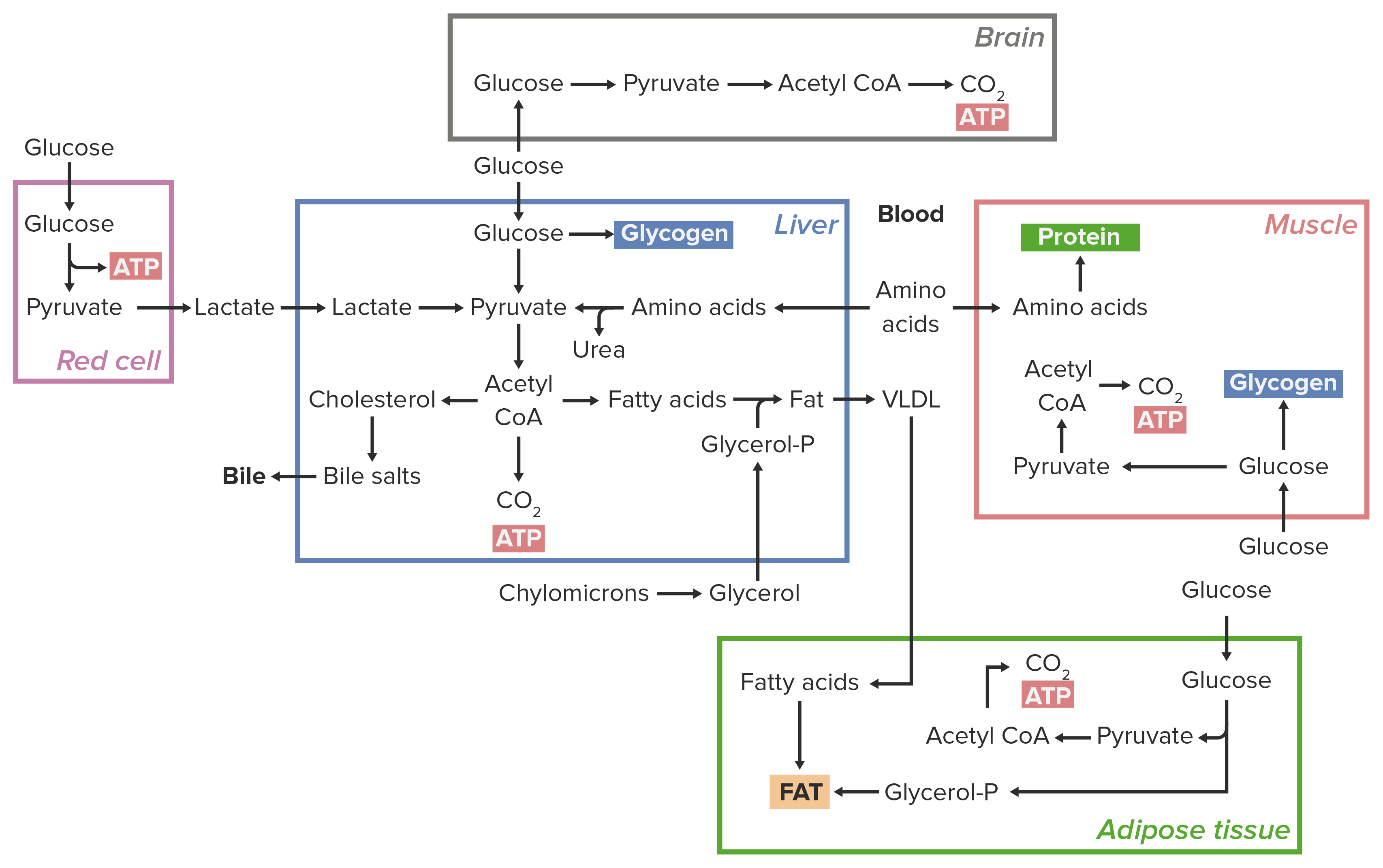Playlist
Show Playlist
Hide Playlist
Bicarbonate Buffering System
-
Slides 14 EnergyEnzymesMetabolism CellBiology.pdf
-
Download Lecture Overview
00:00 Now if we want to think about a reaction that's in biology that we have already taken a quick look at, we'll look at this bicarbonate buffering system. 00:12 If we have carbon dioxide and water coming together, they require an enzyme called carbonic anhydrase to put the two molecules together and form carbonic acid. 00:25 Once we form carbonic acid, it is a reversible reaction, so we could go back the other way and get the original substractes back. 00:34 So pretty much all reactions are reversible. 00:38 Although on occasion, we'll run into a reaction in which the activation is so big, we can not even overcome it. 00:45 But theoretically, they could be reversible. 00:49 So the rate of activity of enzymatic reactions really depends on substrate concentration up to a certain point. 00:59 So here's an example bar. If we have a certain number of enzymes, and a certain number of substrates, those enzymes will bind substrates, and the more the substrate there is, the higher the reaction rate, up till a certain point at which each of the enzyme is full and then we max out. 01:20 An anology here would be that if I were trying to catch tennis balls and put them in a basket down here on the floor, I could catch a certain number of tennis balls and I can work fairly quickly, but if I receive too many tennis balls, they are going to start falling all over the place and I can only work at a certain rate. 01:39 So the enzyme activity is restricted or limited by the concentration of enzymes or the number of enzymes available to do the work. 01:49 Cells can increase the number of enzymes to increase the rate of reaction and a number of signals can happen, more and more and more signals, but it's limited again by the concentration of enzymes which is determined by the cell itself. 02:06 A couple of things that impact the rate of reactions, we'll see also were involved in the denaturation of proteins. 02:17 If you recall, we have the influence of temperature. If we heat up the temperature too much, proteins denature. 02:23 The active sites might change shape and not receive the receptor or the signal molecule properly. 02:31 So all enzymes have an optimum temperature for functioning. For example in humans, right around body temperature, all make sense. 02:41 However, there are some other organisms for example that living hydrothermal vents in Yellowstone National Park, it's beautiful there, but it's very very very hot. Some of these prokaryotic organisms have to have enzymes that function at very high temperatures. 02:58 And we'll see an example of this when we look at DNA replication and some technologies there we've taken advantage of, an enzyme called taq polymerase from very hot environments, we've stolen it from a prokaryotic cell. 03:13 So we'll see that later on. 03:15 Another impact would be pH. Again if we change pH, proteins change shapes, so we have optimum pHs for the enzyme functioning. 03:27 For example, we consider the enzyme pepsin works in a very acidic environment in the gastrointestinal system. 03:34 The stomach is very acidic, produces a lot of acid which if we had a enzyme that function at our normal body pH would fall apart. 03:45 So pepsin has an ultimate functioning at around pH high twos into threes, whereas the enzyme trypsin functions at a more normal body pH around 7. 03:59 So any enzymes working in the stomach have to be set up for a very acidic environment. 04:04 Optimum functioning, otherwise the proteins change shape, denature and don't work as efficiently.
About the Lecture
The lecture Bicarbonate Buffering System by Georgina Cornwall, PhD is from the course Energy, Enzymes and Metabolism.
Included Quiz Questions
Which enzyme helps in maintaining the bicarbonate buffering system?
- Carbonic anhydrase
- Pepsin
- Trypsin
- Acetylcholinesterase
- Adenylate cyclase
Which of the following is TRUE regarding enzyme activity?
- The reaction rate is dependent on enzyme concentration when the pH, temperature, and substrate concentration are optimal.
- pH only affects the enzymes produced in the stomach.
- Temperature only affects enzymes in humans.
- The reaction rate does not depend on the substrate concentration. The pH of a system is the driving factor.
- The body cannot produce more enzymes to help increase the reaction rate.
Customer reviews
5,0 of 5 stars
| 5 Stars |
|
5 |
| 4 Stars |
|
0 |
| 3 Stars |
|
0 |
| 2 Stars |
|
0 |
| 1 Star |
|
0 |




